
JOURNAL OF CELLULAR PLASTICS
Scope & Guideline
Pioneering Research in Cellular Plastics
Introduction
Aims and Scopes
- Polymeric Foam Characterization:
Research in this area emphasizes the characterization techniques for evaluating the structural, mechanical, and thermal properties of polymeric foams, including advanced methods like 3D imaging and molecular dynamics simulations. - Processing Techniques and Innovations:
The journal covers a range of processing methodologies for producing cellular plastics, including extrusion, injection molding, and foaming processes, often focusing on optimizing conditions to enhance material properties. - Material Development and Sustainability:
A significant aspect of the journal is dedicated to the development of environmentally friendly and sustainable foam materials, exploring bio-based polymers and recycling methods to enhance the sustainability of polymeric foams. - Application-Focused Research:
This journal also highlights research that investigates the practical applications of cellular plastics across various industries, including automotive, construction, and packaging, addressing performance requirements and safety standards. - Advanced Computational Modeling:
There is a strong emphasis on utilizing computational modeling techniques to predict and analyze the behaviors of foams under various conditions, enhancing the understanding of their mechanical performance and processing behavior.
Trending and Emerging
- Bio-Based and Eco-Friendly Materials:
There is a growing emphasis on the development of bio-based foams and environmentally friendly materials, driven by increasing awareness of sustainability in manufacturing and material usage. - Advanced Characterization Techniques:
Emerging themes include the use of sophisticated characterization techniques, such as 3D imaging and molecular modeling, to analyze foam structures and properties at unprecedented levels of detail. - Composite and Hybrid Foams:
Research is trending towards the creation and analysis of composite and hybrid foams that combine multiple materials to achieve superior performance characteristics, such as enhanced mechanical strength and thermal insulation. - Machine Learning and AI Applications:
The integration of machine learning and artificial intelligence in predicting and optimizing the properties and behavior of foams is becoming increasingly prominent, showcasing the journal's commitment to innovative methodologies. - Flame Retardancy and Safety Standards:
There is heightened interest in developing flame-resistant foams and ensuring compliance with safety standards, reflecting industry demands for materials that offer both performance and safety.
Declining or Waning
- Traditional Polymeric Foams:
Research on conventional polymeric foams, such as standard polyethylene or polystyrene, seems to be declining as more attention shifts towards innovative materials and bio-based alternatives that align with sustainability trends. - Basic Mechanical Property Studies:
While mechanical characterization remains important, there is a noticeable decrease in studies solely focused on basic mechanical properties without incorporating advanced modeling or sustainability aspects. - Single-Polymer Systems:
There is a trend away from research focusing exclusively on single-polymer systems, as more studies are now exploring composite and hybrid foam systems that leverage the advantages of multiple materials. - Low-Tech Processing Methods:
Research on simpler, low-tech processing methods is becoming less frequent as the journal increasingly prioritizes advanced and innovative processing techniques that enhance performance and sustainability. - Non-Environmentally Friendly Foams:
The focus on non-sustainable or environmentally detrimental foam materials is waning, reflecting a broader shift in the field towards greener alternatives and eco-conscious research.
Similar Journals
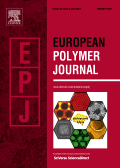
EUROPEAN POLYMER JOURNAL
Empowering Researchers to Shape the Future of MaterialsEUROPEAN POLYMER JOURNAL is a leading academic journal published by PERGAMON-ELSEVIER SCIENCE LTD, dedicated to advancing the field of polymer science and engineering. With a distinguished history since 1965, this journal serves as a critical platform for researchers to disseminate high-quality research findings within a broad scope that encompasses materials chemistry, organic chemistry, and physics. The journal boasts an impressive Q1 category ranking in multiple fields, including Materials Chemistry, Organic Chemistry, and Polymers and Plastics, placing it in the top tier of academic journals worldwide. Its standing is further reinforced by its high citation metrics, with ranks such as #16 in Organic Chemistry and #20 in Polymers and Plastics, reflecting its significant contribution to the advancement of knowledge and innovation in these areas. Although currently not available as an open-access journal, it provides subscribers with in-depth studies, reviews, and insights relevant to both academia and industry. Researchers, professionals, and students alike will find invaluable information and emerging trends in polymer research, making the EUROPEAN POLYMER JOURNAL an essential resource for staying at the forefront of this dynamic and evolving field.
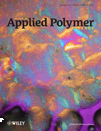
JOURNAL OF APPLIED POLYMER SCIENCE
Innovating Applications, Transforming MaterialsThe Journal of Applied Polymer Science, published by Wiley, is a leading journal in the field of polymer science, showcasing innovative research and applications in various domains since its inception in 1959. With an ISSN of 0021-8995 and an E-ISSN of 1097-4628, it is indexed in prominent databases, maintaining a strong presence with Scopus rankings placing it in the Q2 category across multiple disciplines, including Chemistry, Materials Chemistry, and Polymers and Plastics. The journal’s commitment to advancing scientific knowledge is reflected in its impact on the materials science community, with noteworthy rankings such as #38 in Surfaces, Coatings and Films and #51 in Polymers and Plastics. Though not an open-access publication, it remains a vital resource for researchers, professionals, and students aiming to deepen their understanding of polymer applications and to stay abreast of the latest developments in this ever-evolving field. With a focus on high-quality research, the Journal of Applied Polymer Science continues to be a cornerstone for those engaged in polymer research and its myriad applications.
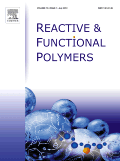
REACTIVE & FUNCTIONAL POLYMERS
Shaping the Future of Polymer Science, One Article at a TimeREACTIVE & FUNCTIONAL POLYMERS, published by Elsevier, is a leading journal in the field of polymer science, focusing on the innovative development and application of reactive and functional polymers. With an impressive impact demonstrated through its classification in various prestigious categories, including Q1 rankings in Chemical Engineering, Chemistry, and Materials Chemistry, this journal serves as an essential resource for researchers and professionals seeking to explore the latest advances in polymer research. With a broad scope that encompasses topics from biochemistry to environmental chemistry, and a convergence of significant findings from 1995 to 2024, REACTIVE & FUNCTIONAL POLYMERS fosters academic dialogue and collaboration among scientists. The journal also features Open Access options, ensuring that groundbreaking research is readily available to a global audience. By consistently publishing high-quality articles, it not only enriches the scientific community but also drives innovation across various industries reliant on polymer technologies.
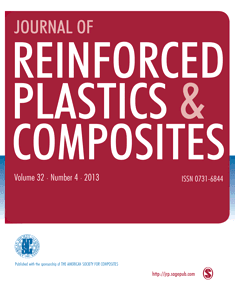
JOURNAL OF REINFORCED PLASTICS AND COMPOSITES
Shaping Tomorrow's Materials TodayWelcome to the JOURNAL OF REINFORCED PLASTICS AND COMPOSITES, a leading publication in the realms of materials science, engineering, and polymers. Published by SAGE Publications Ltd, this journal stands out with its robust Q2 ranking in multiple categories, including Ceramics and Composites, Materials Chemistry, Mechanical Engineering, and Mechanics of Materials. Since its inception in 1982, the journal has become an essential resource for researchers and professionals, disseminating pioneering research and innovative applications in reinforced plastics and composite materials. Though not open access, subscribers gain exclusive insights into groundbreaking findings contributing to the advancement of the industry. The journal is indexed in Scopus, with notable rankings that reflect its influence and high-quality scholarship. With ongoing coverage until 2024, the JOURNAL OF REINFORCED PLASTICS AND COMPOSITES remains committed to fostering academic dialogues and facilitating advancements in sustainable materials and advanced engineering solutions.

Progress in Rubber Plastics and Recycling Technology
Pioneering research for a circular economy.Progress in Rubber Plastics and Recycling Technology, published by SAGE Publications Ltd, is a premier journal dedicated to advancing the fields of rubber, plastics, and recycling technologies. Since its inception in 2003, the journal has played a crucial role in disseminating high-quality research, bridging the gap between scientific inquiry and practical applications in chemical engineering and materials science. With an Impact Factor reflective of its rigorous peer-review process, and ranks placing it in the second quartile (Q2) for Chemical Engineering and third quartile (Q3) across Materials Chemistry, Organic Chemistry, and Polymers and Plastics, this journal serves as an essential resource for scholars and industry professionals alike. Although it does not offer Open Access, it remains a vital platform for discussing innovations and sustainable practices within the rubber and plastics sectors. The journal's objectives focus on fostering interdisciplinary collaborations and sharing findings that contribute to a sustainable future. As it continues through 2024, Progress in Rubber Plastics and Recycling Technology aims to inspire new directions in research and application in this ever-evolving field.
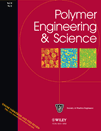
POLYMER ENGINEERING AND SCIENCE
Connecting Researchers in Polymer SciencePOLYMER ENGINEERING AND SCIENCE, published by WILEY, is a premier journal specializing in the field of polymer science and engineering. Since its inception in 1961, this journal has been at the forefront of disseminating high-quality research, focusing on various aspects of polymers and plastics, including their chemistry, properties, and applications. With an impressive impact factor, it ranks in the second quartile (Q2) across multiple categories, including Chemistry (Miscellaneous), Materials Chemistry, and Polymers and Plastics, showcasing the journal's significance and influence in these vital areas of research. Researchers and professionals in academia and industry will find the latest advancements and innovative methodologies in polymer science, making this journal an essential resource for those looking to stay updated on cutting-edge developments. While it does not currently support Open Access, its comprehensive scope and critical insights positioned it as a valuable platform for advancing knowledge and fostering collaboration within the polymer community. The journal’s office is located at 111 River St, Hoboken 07030-5774, NJ, United States, emphasizing its strong presence in the academic landscape.
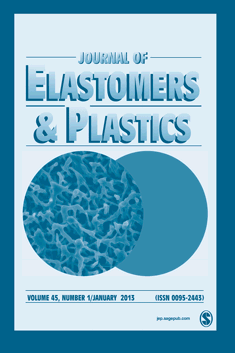
JOURNAL OF ELASTOMERS AND PLASTICS
Unveiling Breakthroughs in Elastomer TechnologyJOURNAL OF ELASTOMERS AND PLASTICS is a prestigious peer-reviewed journal published by SAGE Publications Ltd that has been at the forefront of material science research since its inception in 1969. Focusing on the fields of Materials Chemistry and Polymers and Plastics, this journal aims to disseminate cutting-edge research that explores the synthesis, characterization, and application of elastomers and plastics in various industries. With a position in the Q2 category for both Materials Chemistry and Polymers and Plastics as of 2023, it showcases significant contributions that push the boundaries of knowledge in these vital areas. Although it does not offer Open Access options, the journal continues to be regarded for its rigorous standards and comprehensive peer-review process. Researchers, professionals, and students in the field will find valuable insights and essential methodologies that can drive innovation and enhance practical applications in elastomers and plastics.

POLYMER SCIENCE SERIES B
Innovating Materials Chemistry for TomorrowPOLYMER SCIENCE SERIES B is a distinguished journal published by MAIK NAUKA/INTERPERIODICA/SPRINGER, dedicated to advancing knowledge in the fields of ceramics and composites, materials chemistry, and polymers and plastics. The journal, identifiable by its ISSN 1560-0904 and E-ISSN 1555-6123, spans a significant timeline from 1996 to 2024, reflecting its commitment to preserving and disseminating cutting-edge research in polymer science. With its current ranking in the Q3 category across relevant fields, it supports scholars and professionals in enhancing their understanding and application of polymeric materials. While it operates on a non-open access basis, the journal is pivotal for researchers seeking in-depth analysis and peer-reviewed studies. Located in the heart of the United States at 233 Spring St, New York, NY 10013-1578, POLYMER SCIENCE SERIES B serves as an essential resource for committed researchers, professionals, and students aiming to push the boundaries of polymer science.

Journal of Composites Science
Advancing the Frontiers of Composite MaterialsThe Journal of Composites Science, published by MDPI, is a premier Open Access journal dedicated to advancing the field of composites and materials science. Launched in 2017, this innovative journal provides a platform for researchers, professionals, and students to share findings, methodologies, and insights related to composites, ceramics, and engineering applications. With an impressive Q2 ranking in both the Ceramics and Composites and Engineering (miscellaneous) categories for 2023, the journal is well-positioned within the academic community, ranking 48th out of 204 in miscellaneous engineering and 47th out of 127 in ceramics and composites according to Scopus. The journal's open-access model ensures that high-quality research is widely available to the scientific community, fostering collaboration and innovation. Situated in defensive Switzerland at ST ALBAN-ANLAGE 66, CH-4052 BASEL, the Journal of Composites Science is an essential resource for those seeking to stay at the forefront of the composites domain and drive progress in engineering practices.

Epitoanyag-Journal of Silicate Based and Composite Materials
Exploring the Future of Composite MaterialsEpitoanyag-Journal of Silicate Based and Composite Materials is a premier international journal published by the Scientific Society Silicate Industry-SZTE, focusing on the development and application of silicate and composite materials. With its Open Access policy established in 2013, this journal provides a platform for researchers, professionals, and students to disseminate and access high-quality research without barriers. The journal aims to foster advancements in the field by covering a broad spectrum of topics, including material characterization, innovative applications, and sustainability initiatives related to silicate-based and composite materials. Its commitment to sharing valuable research makes it an essential resource for those looking to stay at the forefront of material science. Located in Budapest, Hungary, the journal not only serves a global audience but also contributes to the ongoing dialogue within the materials science community.